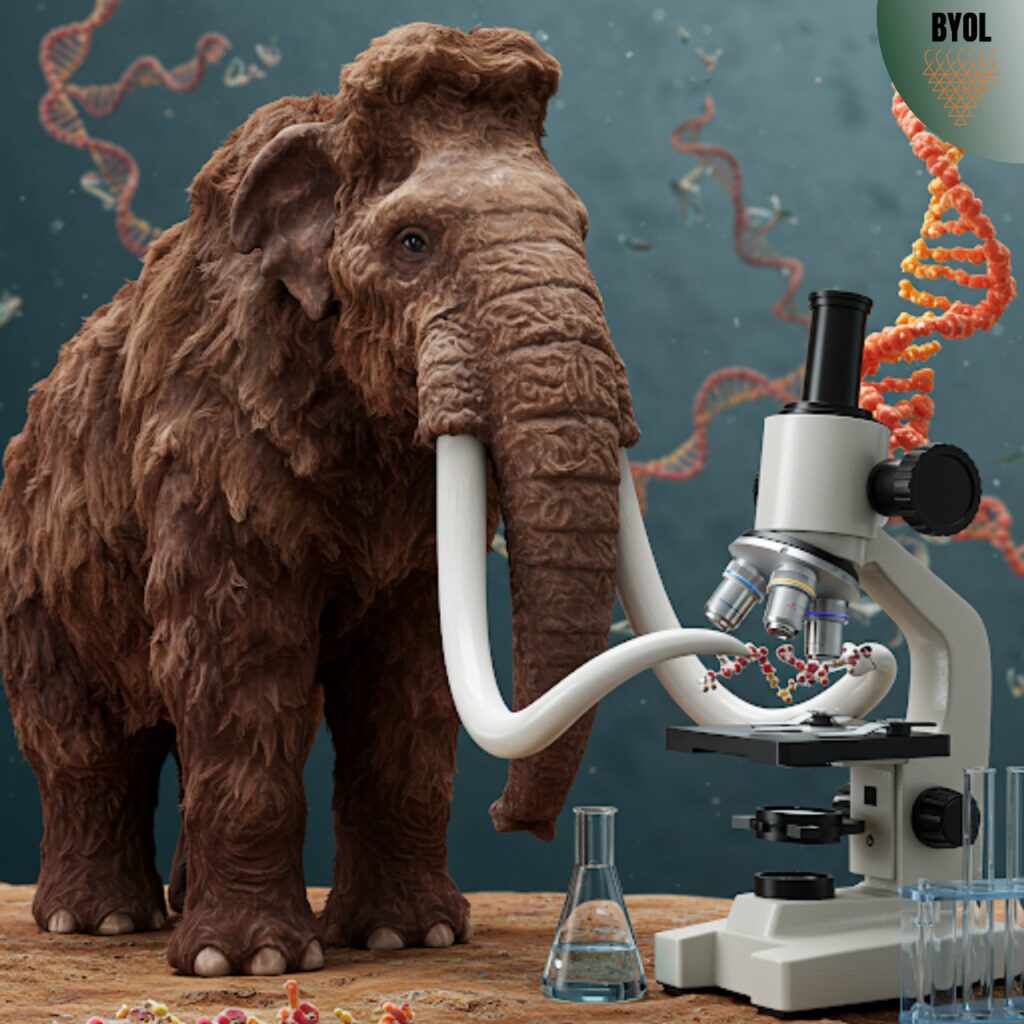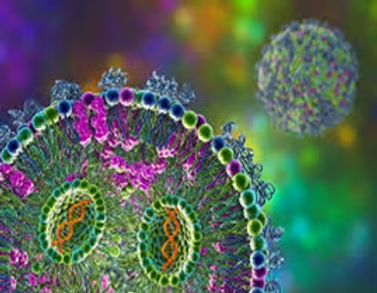Extinction is an intrinsic evolutionary mechanism that helps ensure the fine balance naturally present within each ecosystem. If a species cannot adapt after losing its niche due to biotic or abiotic influences, it will ultimately vanish, allowing another to take its place. Internally caused extinction, as with most other natural processes, is neither bad nor good and is unavoidable. Many modern-day extinction events are not caused by internal dynamics but are externally compelled by human agency. This has resulted in the premature extinction of large numbers of species across recent and ancient times. Either by inducing brutal alterations to their physical environments, by the introduction of toxic invasive species, or by over-hunting, human beings have permanently shifted the equilibrium of several balanced ecosystems in one direction or another. Whereas species loss by extinction has up to this point been permanent, current research is increasingly indicating that this may no longer be so shortly. Shortly, species that have gone extinct can be reintroduced by methods including backbreeding, genetic engineering, or cloning in a process known as de-extinction.

As sensational as it might sound to bring extinct species back from the dead, the possible rewards in reintroducing stability and functionality to ecosystems otherwise threatened by extinction make it a profitable venture to undertake de-extinction as a form of ecological engineering towards restoration. De-extinction in this sense doesn’t necessarily have to involve reviving a gone species as a replica, but reconstituting an ecologically functional counterpart of the extinct original species. In recognition of this reality, the 2016 International Union for Conservation of Nature (IUCN) de-extinction guiding principles refer to the outcomes of de-extinction as ‘proxy species’, to acknowledge that de-extinction is not a means of ‘righting past wrongs’ but a means of restoring declining ecosystems by bringing back keystone species pushed to extinction by anthropogenic activity. Several human-initiated extinctions throughout history have resulted from the exploitation of nature for economic benefits, and as such, using de-extinction for these purposes can only be deemed counter-productive. The reintroduction of an extinct species to habitats which have been denied their existence for possibly tens of thousands of years will pose ecological and evolutionary questions, for instance, whether they will still be able to play the roles that they had previously been playing, and whether there will be unintended results of their reintroduction in today’s ecosystem. Ethics is another critical consideration and will have a range of different implications based on the chosen species and route through which the reintroduction would be undertaken.
Executing De-Extinction

There are three possible routes to de-extinction: back-breeding, cloning, and genome editing. While differing in terms of complexity and closeness to the original, they all seek to produce a functionally equivalent animal that can replace the niche lost with the extinction of its ancestor.
Back-breeding
- One of the simplest and lowest accuracy techniques, back breeding, offers a rigorously pragmatic alternative to the extinction of species.
- By selective breeding, particular ancestral traits associated with the desired function, which were lost or diluted over time, can be reestablished in populations. Once the phylogeny of the target species, their closest living relatives are selected as a beginning for the process, several mating pairs are created.
- The progeny of these pairs are subsequently classified according to the existence of the target functional phenotype and bred to yield the subsequent generation.
- An illustrious example of this would be the back-breeding programme organized in Germany as an effort to resurrect the aurochs species that had become extinct. Even after they became extinct in the 1600s, the Heck brothers resorted to selective breeding on their different European descendants to yield offspring with phenotypes resembling what they imagined the aurochs would be like. Although the result could not be said to be the same species as the now-extinct aurochs, they had a morphology similar to them. This technique is not necessarily certain to produce a loyal reconstruction of the target species.
Cloning
Cloning, in other words, creating a straightforward replica of the target animal, provides a more accurate method towards de-extinction. It has the advantage of ensuring that the reconstituted species is as close to the original as possible, as well as skipping the need for breeding multiple generations, but it does not come without its drawbacks. Cloning for de-extinction has seen limited success so far, with the only cloned extinct animal, a bucardo, dying shortly after birth. The bucardo, or Pyrenean ibex, was one of four subspecies of Iberian wild goat that lived in the Pyrenees until the 20th century. Although the final member of this species, a female named Celia, passed away in 2000, cryo-preserved samples obtained from her body were utilized to create a culture of fibroblasts in 2003. The cloned kid was the first de-extinction of an evolutionarily dormant species, but it passed away 7 minutes after birth because of a collapsed lung.
Genome editing
- Genetic engineering offers a likely path to de-extinction, employing a mix of gene editing technology and cloning to bring back the target species based on their closest living relative as a starting point.
- To start the process, initially, the complete genome of the target species needs to be sequenced from tissue samples. DNA degrades more slowly than the cell it lives in, and therefore, it is possible to take samples from long-dead animals, provided they have been properly preserved. Once the genome is obtained, it is compared with the genome of the closest living relative. For efficiency, only the sites responsible for phenotypical change are selected, and modifications are made to a cell from the extinct species, which is then used in cloning. This procedure has the merit of having the potential to carry out direct changes to the target species’ genes for the goal of eliminating bad mutations or inducing genetic variation.
Benefits of De-extinction
- A breakthrough in genetic technologies that are applied to make the cloning process better for de-extinction can be utilized to prevent endangered animals from going extinct.
- Studies on revived formerly extinct animals may create options to cure numerous diseases.
- Recreated species can aid in conservation efforts by serving as “flagship species” to build public interest and support for preserving entire ecosystems.
- Giving de-extinction priority can lead to refining existing conservation techniques. Conservation practices would first be required to restore a species into the ecosystem until the resurrected population can reproduce itself in the wild.
- The reintroduction of an extinct species would also assist in enhancing ecosystems that had been devastated by human development.
Drawbacks of De-extinction
- The reintroduction of extinct species would be detrimental to existing species and their environment. The ecological niche of the extinct species might have been filled in its original environment, thereby qualifying it as an invasive species.
- De-extinction might cause other species to become extinct through competition for food or other competitive exclusion. It may also cause the extinction of prey species in case they have additional predators within an environment that had few predators before the reintroduction of an extinct species.
- A species may also go extinct once again after de-extinction if the cause of its extinction is still present. The woolly mammoth may be poached by poachers just like elephants for their tusks, and may go extinct once more. If a species is put back into an environment with a disease to which it has no immunity, the species may be exterminated by the disease that the present species cannot live through.
- De-extinction is an extremely costly process, and reviving a single species costs millions of dollars. This would imply that critically endangered species would begin to become extinct more quickly because there are no longer the resources necessary to support their populations.
- Because cloning technology cannot exactly produce a species in the same condition as it occurred naturally, its reintroduction does not necessarily restore beneficial environmental elements. They are not going to occupy the place in the food chain that they previously held and thus cannot regenerate impaired ecosystems.
The return of the Dire Wolf

- De-extinction was placed on the horizon as a near reality recently when the biotech firm Colossal Biosciences revealed its intentions to bring back the Dodo in January of 2023.
- Colossal Biosciences made the first successful resurrection of an extinct species by the de-extinction process, announcing the return of the extinct dire wolf that went extinct more than 10,000 years ago.
- In 2021, a group of scientists was able to extract DNA from the fossils of dire wolves, which became extinct around 13,000 years ago. With the availability of DNA, the Colossal researchers have now edited 20 genes of gray wolves to give the animals important characteristics of dire wolves. They then created embryos from the edited gray-wolf cells, implanted them in surrogate dog mothers, and waited for them to give birth to three healthy wolves — two males aged 6 months and one female aged 2 months, named Romulus, Remus, and Khaleesi.
Controversies and Challenges
- The authenticity of these pups being actual dire wolves is controversial.
- Colossal reports that grey wolves and dire wolves share 99.5% of DNA, yet discrepancies in millions of base pairs indicate different species.
- Phylogenetic analysis indicates that the last common ancestor existed 6 million years ago.
Future Prospects
- Despite the breakthrough, the dire wolf species might not be truly reborn.
- The new pups lack parental guidance and hunting skills.
- Breeding is restricted, with plans for a few more engineered animals.
References
- Cowl, V. B., Comizzoli, P., Appeltant, R., Bolton, R. L., Browne, R. K., Holt, W. V., Penfold, L. M., Swegen, A., Walker, S. L., & Williams, S. A. (2024). Cloning for the twenty-first century and its place in Endangered Species Conservation. Annual Review of Animal Biosciences, 12(1), 91–112. https://doi.org/10.1146/annurev-animal-071423-093523
- Mutillod, C., Buisson, É., Mahy, G., Jaunatre, R., Bullock, J. M., Tatin, L., & Dutoit, T. (2024). Ecological restoration and rewilding: two approaches with complementary goals? Biological Reviews. https://doi.org/10.1111/brv.13046
- Odenbaugh, J. (2023). Philosophy and ethics of de-extinction. Cambridge Prisms Extinction, 1. https://doi.org/10.1017/ext.2023.
- Resende, P. S., Viana‐Junior, A. B., Young, R. J., & De Azevedo, C. S. (2021). What is better for animal conservation translocation programmes: Soft‐ or hard‐release? A phylogenetic meta‐analytical approach. Journal of Applied Ecology, 58(6), 1122–1132. https://doi.org/10.1111/1365-2664.13873
- Shapiro, B. (2016). Pathways to de‐extinction: How close can we get to the resurrection of an extinct species? Functional Ecology, 31(5), 996–1002. https://doi.org/10.1111/1365-2435.12705







